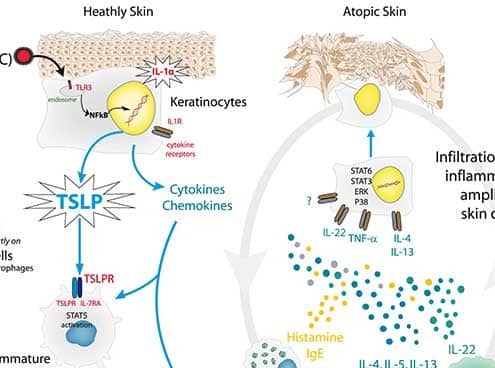
Atopic dermatitis – initiation and chemokines activation step
Atopic dermatitisThe skin lesions facilitate the passage of an antigen that the subject has previously been sensitized to.
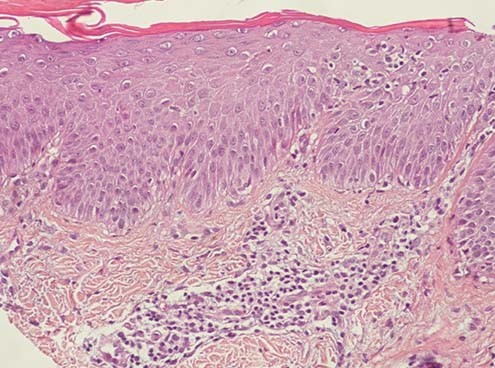
Atopic dermatitis – immune response and skin lesions
Atopic dermatitisTH2/TH22 immune response and other agents of atopic dermatitis
After polarization, the Th2 and Th22 TL migrate to the lesion area, where they release type Th2 (IL-4, IL-5, IL-13, IL-31, TNF-α) and Th22 (IL-22) cytokines respectively. These Th2/Th22 cytokines have different functions in the immunity response.
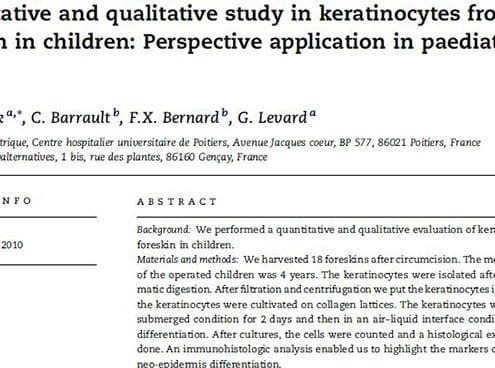
Quantitative and qualitative study in keratinocytes from foreskin in children: Perspective application in paediatric burns
Wound healingKeratinocytes from foreskin have a high capacity for division. A potential source of cells to provide coverage in paediatric burns.
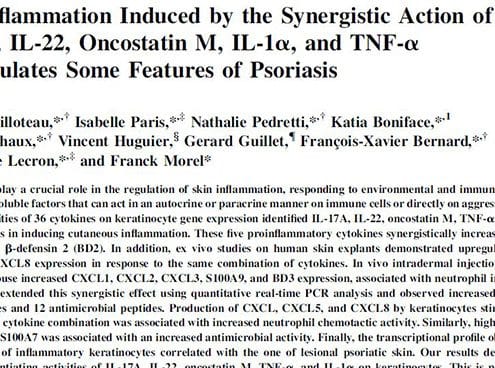
Skin inflammation induced by the synergistic action of IL17A, IL22, OSM, IL1α and TNFα recapitulates some features of psoriasis
PsoriasisOur results demonstrate the important potentiating activities of IL17A, IL22, oncostatin M, TNF-alpha, and IL1alpha on keratinocytes. This is particularly interesting in the context of psoriasis where these cytokines are overexpressed and could synergize to play an important role in upregulation of chemokines and antimicrobial peptides production.
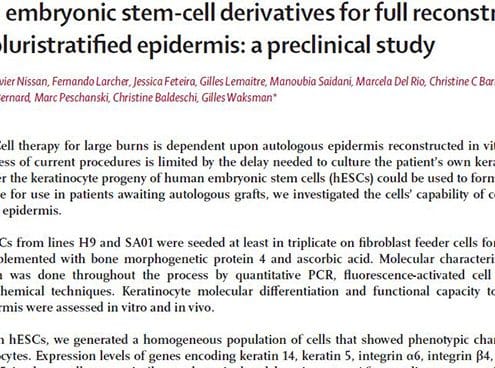
Human embryonic stem-cell derivatives for full reconstruction of the pluristratified epidermis: a preclinical study
Cell and tissue engineering, Dermatology, Pharmacology, Wound healingTo assess whether the keratinocyte progeny of human embryonic stem cells (hESCs) could be used to form a temporary skin substitute for use in patients awaiting autologous grafts, we investigated the cells' capability of constructing a pluristratified epidermis.

Cultured keratinocyte cells from foreskin and future application for burns in children
Wound healingThe keratinocytes resulting from foreskin have a high capacity of division. These cells can divide a long time before differentiation. The observations enable us to propose with our patients the keratinocytes from foreskin for wound healing especially for burns in children.
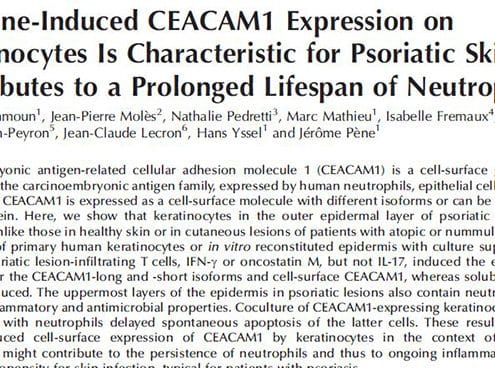
Cytokine-induced CEACAM1 expression on keratinocytes is characteristic for psoriatic skin and contributes to a prolonged lifespan of neutrophils
PsoriasisThese results show that cytokine-induced cell-surface expression of CEACAM1 by keratinocytes in the context of a psoriatic environment might contribute to the persistence of neutrophils and thus to ongoing inflammation and the decreased propensity for skin infection, typical for patients with psoriasis.
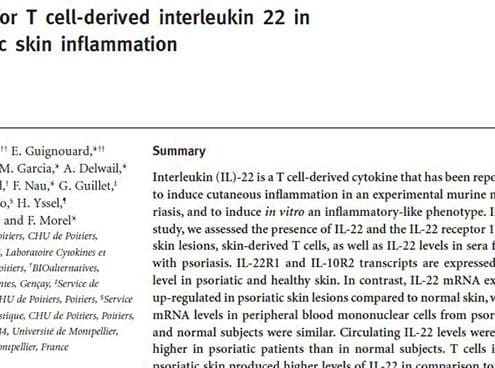
A role for T cell-derived interleukin 22 in psoriatic skin inflammation
PsoriasisThis study indicate that interleukin 22 is a cytokine produced by skin-infiltrating lymphocytes that is potentially involved in initiation and/or maintenance of the pathogenesis of psoriasis.
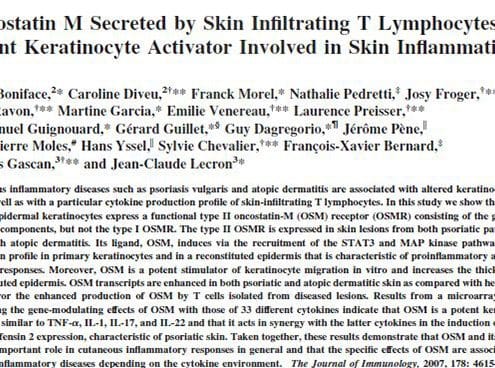
OSM (Oncostatin M) secreted by skin infiltrating T lymphocytes is a potent keratinocyte activator involved in skin inflammation
PsoriasisThese results demonstrate that OSM and its receptor play an important role in cutaneous inflammatory responses in general and that the specific effects of OSM are associated with distinct inflammatory diseases depending on the cytokine environment.
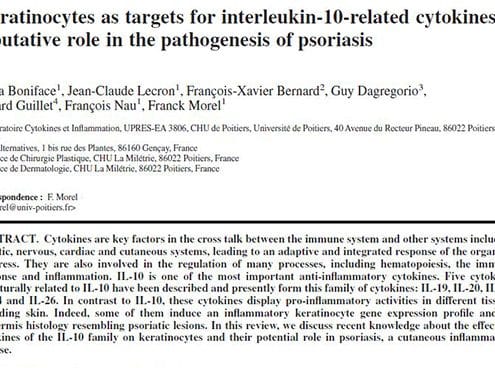
Keratinocytes as targets for IL10-related cytokines : a putative role in psoriasis pathogenesis
PsoriasisIn this review, we discuss recent knowledge about the effects of cytokines of the IL-10 family on keratinocytes and their potential role in psoriasis, a cutaneous inflammatory disease.
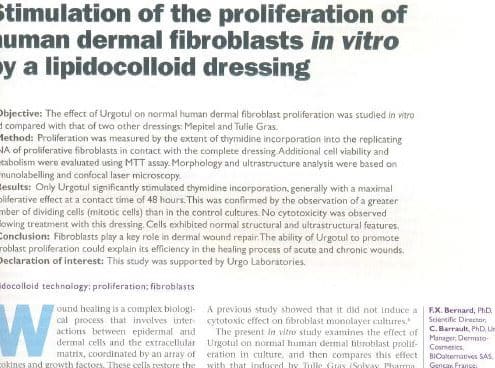
Stimulation of the proliferation of human dermal fibroblasts in vitro by a lipidocolloid dressing
Wound healingThe effect of Urgotul on normal human dermal fibroblast proliferation was studied in vitro and compared with that of two other dressing: Mepitel and Tulle Gras.
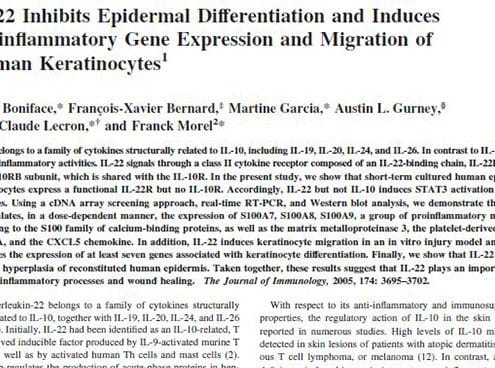
IL-22 inhibits epidermal differentiation and induces proinflammatory gene expression and migration of human keratinocytes
Inflammation, PsoriasisIL-22 belongs to a family of cytokines structurally related to IL-10, including IL-19, IL-20, IL-24, and IL-26. In contrast to IL-10, IL-22 has proinflammatory activities. IL-22 signals through a class II cytokine receptor composed of an IL-22-binding chain, IL-22RA1, and the IL-10RB subunit, which is shared with the IL-10R.



